Tuesday, May 15
7PM
Alamo Ritz, 320 E 6th St (map)
Alamo general ticket prices (tickets)
Experimental Response Cinema is thrilled to welcome Canyon Cinema 50 for two themed programs, Studies in Natural Magic (May 14, AFS Cinema) and Associations (May 15, Alamo Ritz). As the legendary experimental film distributor Canyon Cinema celebrates its fiftieth anniversary, these two screenings are a part of Canyon Cinema’s national tour of programs that represent a rich panoply of independent artist-made films. Introduced by curator David Dinnell.
Tonight– Program 2: Associations

Releasing Human Energies (Mark Toscano, 2012, 5.5 minutes, color, sound)*
A film about control. A refinement of energy for purposes of conserving resources, materials, impetus, potential, so they might all be narrowly channeled toward an unquestioned goal of maximum profit with minimum waste. Capitalism, in this example, as a process of understanding how to make use of someone as efficiently as possible to get the most out of them that is desired. Instructions for keeping people on task. (Mark Toscano)

What is a Man? (Sara Kathryn Arledge, 1958, 10 minutes, color, sound)
What is a Man? propels Sara Kathryn Arledge from the realm of formal experimentation to social satire. Made with a remarkably sharp wit and a trenchant, mocking view of gender conventions, Arledge gives us a work far ahead of its time. Begun in 1951, Arledge received the first Creative Film Foundation award (established by Maya Deren) for script development in 1956 and completed the film in 1958. It was not until Nelly Kaplan’s also neglected feature A Very Curious Girl (1969) that women’s cinema would once again celebrate such a spirited, subversive artist. (Bill Nichols)
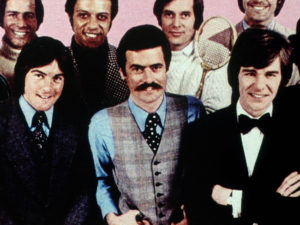
Associations (John Smith, 1975, 7 minutes, color, sound)
Images from magazines and colour supplements accompany a spoken text taken from “Word Associations and Linguistic Theory” by Herbert H. Clark. By using the ambiguities inherent in the English language, Associations sets language against itself. Image and word work together/against each other to destroy/create meaning. (John Smith)
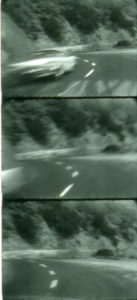
Hot Leatherette (Robert Nelson, 1967, 5 minutes, B&W, sound)*
Preserved by the Academy Film Archive. A kinetic film sketch designed to involve the viewers muscles. The rocky seaside cliffs near Stinson Beach, California, hold the wrecked carcass of a #52 pickup that is a rusting monument to Hot Leatherette. (Robert Nelson)

Dyketactics (Barbara Hammer, 1974, 4 minutes, color, sound)
A popular lesbian “commercial,” 110 images of sensual touching montages in A, B, C, D rolls of “kinaesthetic” editing. (Barbara Hammer)

Flower, the Boy, the Librarian (Stephanie Barber, 1997, 5 minutes, color, sound)
It’s a love story, with the usual dashing figures and old habits of spelling, repetition and listing. (Stephanie Barber)
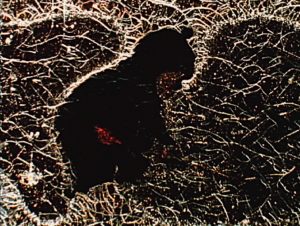
The Snowman (Phil Solomon, 1995, 8 minutes, color, sound)
A meditation on memory, burial and decay – a belated kaddish for my father. (Phil Solomon)

Swiss Army Knife with Rats & Pigeons (Robert Breer, 1981, 6 minutes, color, sound)*
…a typically bravura and delightful display of simple objective forms flashing, rotating, and dissolving into abstraction… (J. Hoberman)
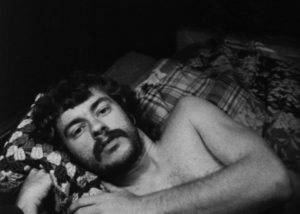
Confessions (Curt McDowell, 1971, 11 minutes, B&W, sound)*
Preserved by the Academy Film Archive. As part of a “legendary body of work that is wildly life-affirming, bawdy, tender, often hilarious, sassy and frequently penetrating” (Mark Toscano), the nakedly personal Confessions, made while Curt McDowell (1945-1987) was a graduate student in San Francisco, opens with the filmmaker looking into the camera while directly addressing his parents (who never did see the film) as he tenderly admits to childhood thefts and lies, drinking and taking drugs, and bluntly describes his varied sexual experiences.
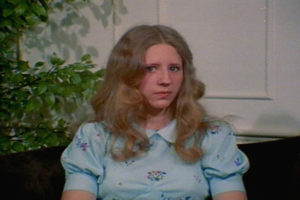
Thine Inward-Looking Eyes (Thad Povey, 1993, 2 minutes, color, sound)
To paraphrase something Lao Tzu didn’t say: This film’s an empty cup — You fill it up. (Thad Povey)
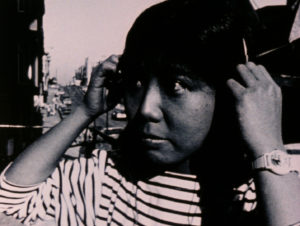
Mercy (Abigail Child, 1989, 10 minutes, color, sound)*
The final film in Abigail Child’s seven-part series “Is This What You Were Born For?”, Child has described Mercy as “dissecting the game mass media plays with our private perceptions.” Child masterfully composes a rhythmic collage of symmetries and asymmetries in a fluid essay that forefronts the treatment of the body as a mechanized instrument – placing the body in relation to the man-made landscape of factories, amusement parks and urban office complexes. With vocals performed by Shelley Hirsch. (from abigailchild.com)
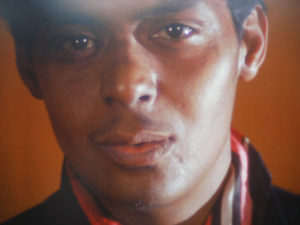
Akbar (Richard Myers, 1970, 16 minutes, color, sound)*
Preserved by the Academy Film Archive. A conversation with a friend – Ahmed Akbar. A short interview-type film portrait with Akbar, a black filmmaker and former student of mine at Kent State. Akbar expresses an unusual and exciting view of himself/blacks in America/and such varied subjects as “this moon race shit!” A friendly, lively, exciting portrait of a very extraordinary person from Akron, Ohio. (Richard Myers)
* designates a new print which was created for the Canyon Cinema 50 tour. These were made from existing printing elements provided by the filmmaker or archive responsible for the film’s preservation.
About Canyon Cinema 50 Tour Series:
Four 16mm programs, composed of 43 films drawn from Canyon’s circulating collection of more than 3,400 titles, will provide an opportunity audiences to encounter some of the defining works of American avant-garde cinema as they were meant to be seen, while also recuperating forgotten voices and casting a contemporary eye on Canyon’s collection. Many of the films in the tour are recent restorations and new prints. Two digital programs built from new HD transfers are also available, allowing participation from a wide variety of venues and organizations. The programs have been curated by David Dinnell.
As a component of the Canyon Cinema 50 project, the touring program is meant not only to celebrate Canyon’s history but also to point the way towards the organization’s continued relevance as both a purveyor of and advocate for artist-made cinema, seeding the next generation of what founding filmmaker Bruce Baillie described as “a federation of willing devotees of the magic lantern muse.” For complete information, visit http://canyoncinema50.org/tour.
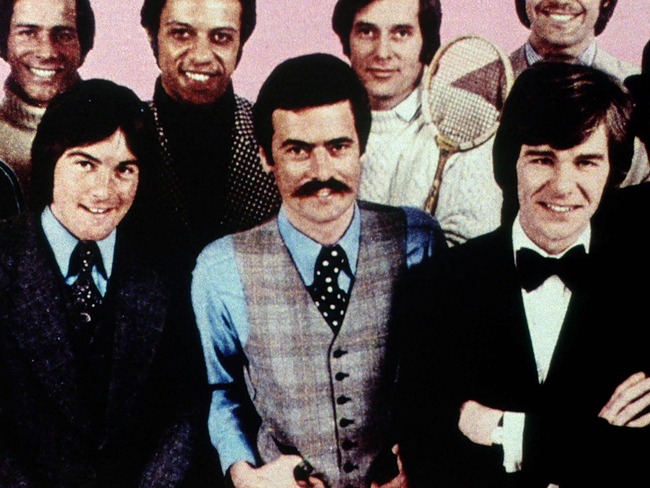
One thought on “Associations:
Canyon Cinema 50 Program 2
May 15”